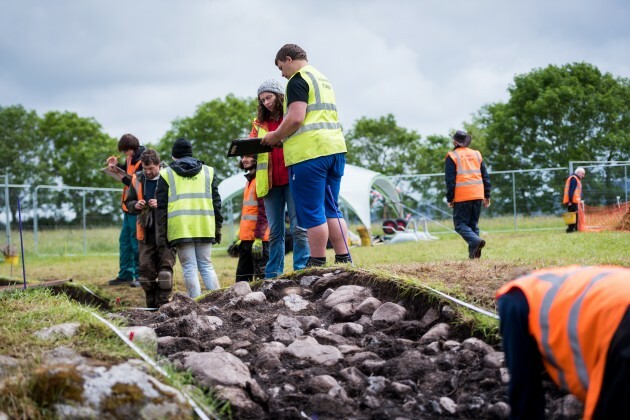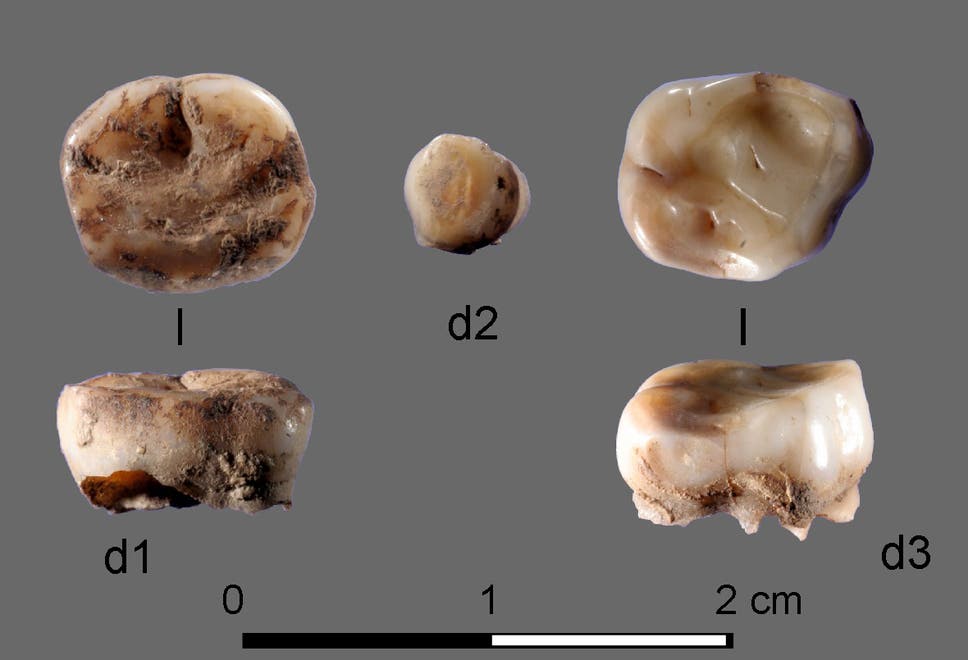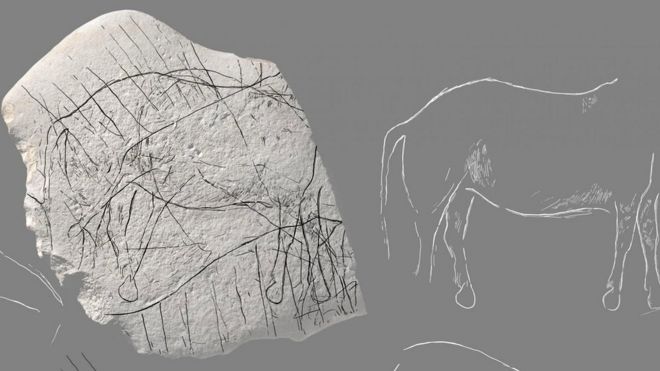Archaeologists have found evidence of ancient human activity on Britain’s very own “Atlantis”.
Scientists investigating a drowned Stone Age landscape at the bottom of the North Sea have discovered two potential prehistoric settlement sites on the banks of a long-vanished ancient river.
It is the first time that an archaeological expedition has ever found such evidence far offshore under the huge body of water.
In the past, prehistoric artefacts have on occasions been trawled up by fishermen and found by oil exploration teams – but the seabed contexts they came from were never archaeologically assessed.
This time, the discoveries are part of a systematic archaeological survey.
Read the rest of this article...
The Prehistoric Archaeology Blog is concerned with news reports featuring Prehistoric period archaeology. If you wish to see news reports for general European archaeology, please go to The Archaeology of Europe Weblog.
Monday, June 17, 2019
Anglesey archaeology: Bronze Age cairn dig at Bryn Celli Ddu
Bryn Celli Ddu burial chamber is aligned to the sun and is lit during the summer solstice
AERIAL-CAM
An excavation is under way on the site of a suspected 4,500-year-old burial cairn that lies next to one of Wales' most important prehistoric monuments.
Experts are hoping to learn more about it and its relationship to Bryn Celli Ddu burial chamber at Anglesey.
The 5,000-year-old "passage tomb" is aligned to coincide with the rising sun on the summer solstice.
Dr Ffion Reynolds said the cairn showed the site remained a "special location" centuries after the chamber was built.
Read the rest of this article...
Sunday, June 16, 2019
Archaeologists uncover megalithic monument thought to be unlike any found in Ireland to date
IT Sligo Archaeology students Jazmin Scally Koulak and Eugene Anderson sieving the soil at Carrowmore excavation
AN ARCHAEOLOGICAL EXCAVATION in Co Sligo has uncovered a megalithic monument thought to be unlike any found in Ireland to date.
Several prehistoric tools made from a hard stone called chert were discovered and are thought to have been used for activities such as working animal hides, cutting and preparing food, basket food, basket working and bone working.
The discovery was made by a team of archaeologists from IT Sligo during a two-week excavation of a prehistoric monument in the heart of the Carrowmore megalithic complex in Co Sligo.
Carrowmore in the largest cemetery of megalithic tombs in Ireland, with 5,500-year-old passage tombs dating from 3,600 BC.
Read the rest of this article...
Thursday, June 13, 2019
Artificial islands older than Stonehenge stump scientists
A diver holds a Neolithic (ca. 3,500 B.C) Ustan vessel found near a crannog (artificial island)
in Loch Arnish, Scotland. PHOTOGRAPH BY C. MURRAY
When it comes to studying Neolithic Britain (4,000-2,500 B.C.), a bit of archaeological mystery is to be expected. Since Neolithic farmers existed long before written language made its way to the British Isles, the only records of their lives are the things they left behind. And while they did leave us a lot of monuments that took, well, monumental effort to build—think Stonehenge or the stone circles of Orkney—the cultural practices and deeper intentions behind these sites are largely unknown.
Now it looks like there may potentially be a whole new type of Neolithic monument for archaeologists to scratch their heads over: crannogs.
Artificial islands commonly known as crannogs dot hundreds of Scottish and Irish lakes and waterways. Until now, researchers thought most were built when people in the Iron Age (800-43 B.C.) created stone causeways and dwellings in the middle of bodies of water. But a new paper published today in the journal Antiquity suggests that at least some of Scotland’s nearly 600 crannogs are much, much older—nearly three thousand years older—putting them firmly in the Neolithic era. What’s more, the artifacts that help push back the date of the crannogs into the far deeper past may also point to a kind of behavior not previously suspected in this prehistoric period.
Read the rest of this article...
Friday, June 7, 2019
DNA from 31,000-year-old milk teeth leads to discovery of new Ice Age population of big game hunters
The DNA was recovered from the only human remains discovered during the era – two tiny milk teeth ( Russian Academy of Sciences )
A new Ice Age population of big game hunters that lived in the depths of Siberia has been discovered using DNA taken from 31,000-year-old human milk teeth.
Named the ‘Ancient North Siberians’ the hardy population would have hunted lions, wolves, woolly mammoths and bison, according to a study led by Cambridge University.
The find was one aspect of new research into the genetic composition of Native Americans who in part descended from these Siberian hunters.
The existence of this fierce population, who first evolved 38,000 years ago, forms “a significant part of human history”, according to lead researcher Professor Eske Willerslev.
He told The Independent: “These humans had adapted to an extremely harsh environment in terms of temperatures – it’s a part of the world that is almost completely dark all winter. There are basically no trees and they were living alongside lions, wolves, bison and rhinos.
Read the rest of this article...
Thursday, June 6, 2019
Prehistoric stone engraved with horses found in France
A generated image of the prehistoric sandstone plate and its engraving
DENIS GLIKSMAN/INRAP
A stone believed to be about 12,000 years old and engraved with what appears to be a horse and other animals has been discovered in France.
The prehistoric find by archaeologists excavating a site in the south-western Angoulême district, north of Bordeaux, has been described as "exceptional".
Markings appear on both sides of the sandstone, the National Archaeological Research Institute (Inrap) said.
It was found during work at an "ancient hunting site" near Angoulême station.
The Palaeolithic stone plate, which is said to be about 25cm long, 18cm wide and 3cm thick, "combines geometric and figurative motifs", Inrap said.
Read the rest of this article...
Wednesday, June 5, 2019
Africa’s first herders spread pastoralism by mating with foragers
INHERITING HERDING Ancient DNA indicates that early African herders started mating with hunter-gatherers more than 5,000 years ago. Here, modern herders in Tanzania watch over their goats.
Ancient sheep, goat and cattle herders made Africa their home by hooking up with the continent’s native hunter-gatherers, a study suggests.
DNA analysis shows that African herders and foragers mated with each other in two phases, says a team led by archaeologist Mary Prendergast of Saint Louis University in Madrid. After entering northeastern Africa from the Middle East around 8,000 years ago, herders swapped DNA with native foragers between roughly 6,000 and 5,000 years ago. Herders possessing some forager heritage then trekked about halfway down the continent and mated with eastern African foragers around 4,000 years ago, the scientists report online May 30 in Science.
Present-day herders, such as the Dinka in South Sudan, still live in eastern Africa. But how pastoralism spread into the region has been a mystery. In particular, it has been difficult to tell whether ancient African hunter-gatherers mated with early herders or simply adopted their livestock practices. The new study supports an emerging view from ancient DNA studies that human cultural evolution has often featured mating across groups with different traditions and lifestyles.
Read the rest of this article...
Monday, June 3, 2019
The Birdman of Siberia: sensational finds in the heart of Russia puzzle scientists
Two unique burials of the Odinov culture (early Bronze) were unearthed last year at the Ust-Tartas site in Novosibirsk region.
Inside one of them researches found several dozen long beaks and skulls of large birds assembled into something looking like a collar, a head dress, or armour.
‘Nothing of this kind was ever found as part of Odinov culture in all of Western Siberia’ said researcher Lilia Kobeleva from Novosibirsk Institute of Archeology and Ethnography.
‘Why do we think this was a part of clothing? The beaks were assembled at the back of the skull, along the neck, as if it was a collar that protected the owner when he lived here.’
Read the rest of this article...
17 amphorae from the 3rd century BC discovered off Cannes
Credit: Marc Langleur
A campaign of underwater archaeological excavations has uncovered 17 amphorae dating from the 3rd century BC at a depth of twenty metres, not far from the Lérins islands off the Bay of Cannes.
According to Anne Joncheray, archaeologist and director of the Saint-Raphaël Museum of Archaeology, the 2,300-year-old amphorae are remarkably well-preserved and were likely used to transport locally produced wine to the Greek trading posts of the Mediterranean.
Read the rest of this article...
Sunday, June 2, 2019
Whipworm eggs found in 8000-year-old human coprolites. Andrew Masterson reports.
Archaeologists carefully excavating the neolithic village.
SCOTT HADDOW
Researchers picking though 8000-year-old human faeces have identified the earliest evidence of intestinal parasite infection in the mainland Near East.
A team led by archaeologist Piers Mitchell of Cambridge University in the UK travelled to the well preserve remains of a prehistoric village called Çatalhöyük, in southern Anatolia.
The site was occupied from about 7500 to 5700 BCE, and is today a UNESCO World Heritage Site.
Apart from the extraordinarily good state of its survival, the village is of key interest because it was occupied around the period that populations in the region shifted from foraging to farming.
The change in both diet and lifestyle – particularly the emergence of permanent settlements – introduces the question of whether such a shift in living conditions also brought about a consequent change in disease profiles.









